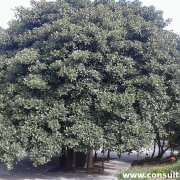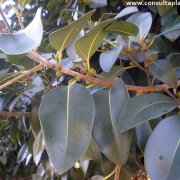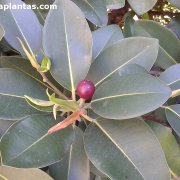Care of the tree Ficus rubiginosa or Rusty fig |
|
The genus Ficus, family Moraceae, includes 900 species of trees, shrubs, and climbing plants. Some species are: Ficus rubiginosa, Ficus pumila, Ficus lyrata, Ficus ingens, Ficus deltoidea, Ficus carica, Ficus binnendijkii, Ficus elastica, Ficus salicaria, Ficus benjamina, Ficus radicans, Ficus retusa, Ficus cyathistipula. Common names: Rusty fig, Port Jackson fig, Rusty-leaved fig. This species is native to eastern Australia. They are evergreen trees with a dense crown that reach 15 meters (49.2 feet) in height. The curious aerial roots hang from the branches until they curl on the ground, forming columns that ensure the stability of the tree. They have leathery oval leaves with a dark green upper surface and a light, hairy underside. They produce yellow fruits that turn red when ripe. Rusty fig is used as shade trees in large gardens and in public parks. It is important not to plant it near buildings and pipes because the roots (not aerial) have an aggressive growth. It's also used in pots as a houseplant (juvenile phase) and for bonsai. Ficus rubiginosa can be grown in full sun or semi-shade exposure. It resists light and occasional frosts. The soil can be a mixture of garden substrate, coarse sand, and compost. Water regularly so that the substrate does not dry out completely; it's important not to flood. Fertilize in late winter or fall with compost or manure. Port Jackson fig does not need pruning. Ficus rubiginosa is a plant quite resistant to pests and diseases but sensitive to drought. Rusty-leaved fig propagates easily by cuttings or by air layering. |
Images of the tree Ficus rubiginosa or Rusty fig |
Find plants
Ficus rubiginosa or Rusty fig | Care and Growing
© 2025 FavThemes





